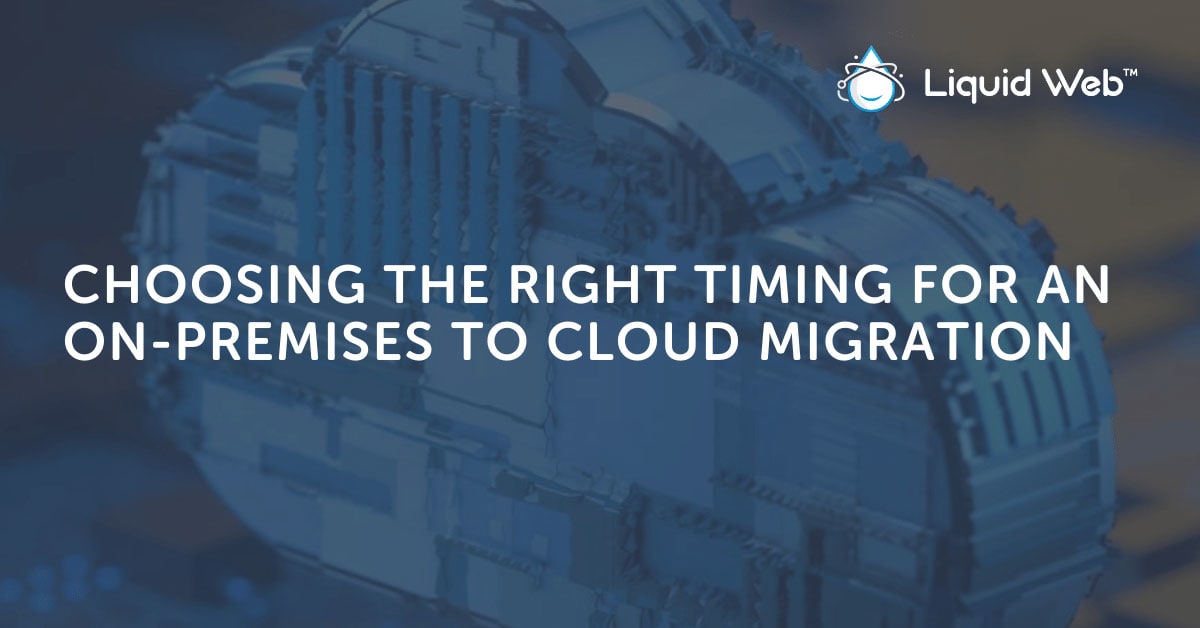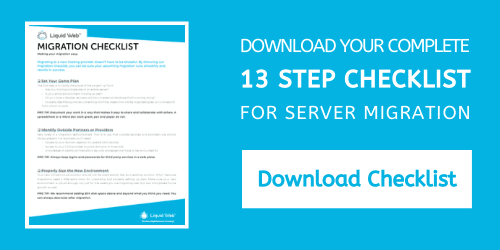
Considering a migration from on-premises to the cloud in the near future?
Cloud technology is transforming how organizations of all shapes and sizes conduct business.
Gone are the days of an old server in an office closet powering core applications or team members responsible for servers and networking in addition to their primary job. Technology is no longer seen as a burden.
Forward-thinking businesses recognize that cloud infrastructure can provide a competitive advantage across the business by reducing costs, improving performance, and better allocation of human resources.
The cloud truly is transformative in today’s business climate.
But how do you know when it’s the right time to migrate your on-premises infrastructure to the cloud? How do you determine that the gains made by embracing this transformative technology will be worth the trouble of disrupting current workflows and introducing your entire organization to something new?
In this post, we will address five key pillars to think about when considering cloud adoption for your organization.
5 Key Considerations for an On-Premises to Cloud Migration
The first thing to recognize when considering a migration from on-premises to the cloud is that every use case and business need is unique. What is right for one organization can be wrong for another.
As a result, the key driver of decisions around any technology shift, including a migration to the cloud, should be defining the business outcomes you are striving for. Without properly considering the full business impact of technology investment, you cannot be sure that your decision is based on sound logic.
With that in mind, here are five guidelines to help uncover if and when migration from on-premises to the cloud is right for you.
1. Performance Needs to be Improved
Perhaps the top reason most organizations consider migrating to the cloud is that existing resources are not performing adequately.
As businesses grow, new applications and data sets become integral to the business. Workflows evolve, and systems become more interconnected and essential. As a result, infrastructure that once worked just fine is now dragging along, slowing down the pace of business.
While dedicated and virtual servers can meet even the most demanding business requirements when configured correctly, the cloud is purpose-built for high performance. Most businesses find that an on-premises to cloud migration results in excellent performance for today’s needs while also providing plenty of room to grow as business needs change.
If your existing infrastructure and network are struggling to keep up with the needs of your business applications, it may be time to execute a cloud migration.
2. Autoscaling or Burst Capacity is Needed
While internal applications have fairly predictable levels of use, external applications like websites and customer portals can be all over the place.
Surprise coverage by a major media outlet can drastically increase web traffic unexpectedly (i.e., the Reddit Effect). A new product or service can drive customers to log in to an application in waves. All of these events and others like them can be great from a business perspective.
However, if the underlying infrastructure does not have enough capacity to serve the needs of the users, the entire system can crash. Even worse, opportunities are lost when websites or applications are buckling under the weight of high utilization.
Cloud deployments come equipped with burst capacity and autoscaling capabilities. This means that the capacity you need is available in the event of a high-traffic event.
If your business is prone to experiencing spikes in traffic and activity that are difficult to forecast, it might be time to consider an on-premises to cloud migration.
3. Technological Utilization Changes
As time passes, the digital footprint of an organization grows. More data is created, collected, and stored. More applications are introduced into workflows. Legacy applications and workloads are rarely removed but are instead left operating.
The cloud can be a particularly useful and powerful option if your business continues to rely on more technology to stay on track.
Imagine operating legacy IBM i-Series workloads while also operating a VMware cloud environment. Imagine moving from paper records to an entirely digital workplace. Imagine transitioning from in-office employees to a remote workforce. All of these things and many others dictate that your technology utilization will change, and often in unpredictable ways.
The cloud makes these iterations and changes possible and practical.
If your organization’s reliance on technology to drive change continues to grow, it might be time to consider a migration from on-premises to the cloud.
4. Internal Resources are Changing
For years, many organizations employed systems administrators and network engineers as an internal IT team to manage infrastructure. Servers, switches, and storage were maintained by a team of professional experts.
However, with the rise of cloud technology, many of these engineers are transitioning their expertise to cloud technologies. As a result, new opportunities abound for cloud engineers, and professional development in the infrastructure arena is increasingly cloud-focused.
Additionally, many engineers who managed infrastructure in the past are aging out of the workforce or being promoted to non-engineering roles. Given that fewer resources are available to handle traditional infrastructure, it is only natural to consider the cloud.
If your internal resources are becoming more cloud-focused, then it might be time to embrace their newfound expertise and consider a cloud migration.
5. Variable Pricing Works Best for Your Company
Historically, one of the great things about traditional infrastructure has been the predictable pricing model. For example, a company might have a certain number of servers deployed and could be comfortable knowing that the bill each month or year would be the same. This makes budgeting simple and forecasting straightforward.
Predictable pricing models have long been of benefit to companies of all sizes.
But what if your infrastructure needs are not consistent? What if your business is seasonal and you need significantly more or fewer resources at different times of day, month, or year? Why should you pay for unused and unneeded deployments and workloads?
Most cloud providers have a per-consumption model wherein the customer only pays for resources in use. This model can work great for anyone looking to maximize their return on investment when it comes to technology.
If a pricing model that only charges for what you use would benefit your business, it may be time to look at migrating your on-premises infrastructure to the cloud.
Is Now the Right Time to Move to the Cloud?
It all boils down to understanding how your company conducts business now versus how they could conduct business after migrating their on-premises infrastructure to the cloud.
This change won’t happen overnight. However, with careful consideration of current processes and future goals, businesses can determine whether or not the cloud is right for them.
If you are interested in exploring how a move to the cloud would benefit your organization and how to make migration possible, our team at Liquid Web would welcome the chance to speak to you. Contact us here to learn more about partnering with Liquid Web for cloud migrations and cloud management.
[ad_2]
Source link







